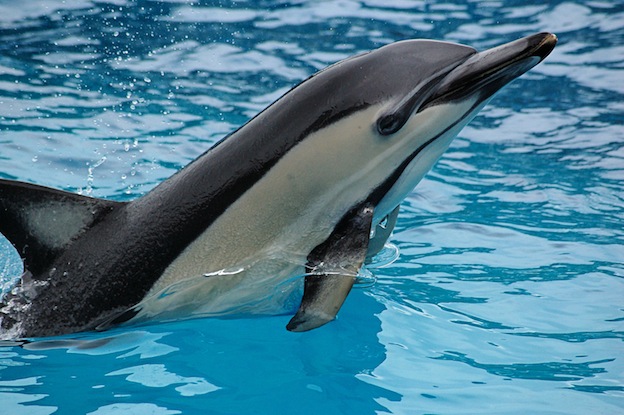
Feeding
The majority of the diet for the Common Dolphin comes from schools of fish. There can be quite a variety of species though for them to select from. What they will have access to depends on their location. Some of these dolphins are quite picky when it comes to which ones they will eat. They will resort to other types of fish though when those they enjoy the most are hard to come by. They will also consume squid and other cephalopods.
Feeding usually occurs at night and then they will be resting during the day. They have up to 57 pairs of teeth on both the upper and lower jaws that they can use to help them hold the prey but they don’t chew their food. What they do consume has to be small enough for them to swallow. They can consume about 5% of their body weight daily.
Reproduction
Females can be ready for mating from 2 to 7 years of age. For the males, it can range from 3 to 12 years old. It is believed that the length of the dolphins plays more of a role in when they are mature to mate than their age. Typically, The Common Dolphin will mate when it grows to a size of 6 ½ feet.
The common time for mating is from June to September. It takes from 10 to 11 months for the calf to be born. The young offspring can be from 2 ½ to 3 feet long at birth. They will drink milk from the body of the mother for several months. The females can give birth every 1 to 3 years.The average lifespan in the wild is 35 years.
Conservation Status and Threats
There are quite a few risks at this time to the Common Dolphin, and many of them are the result of human efforts. One of them is the amount of pollution that continues to find its way into the water. This can include chemicals and plastic. They both have a huge impact on the negative health of these dolphins. Efforts to help reduce pollution continue but still have a long way to go in order to be a success.
Along the coast of Peru, issues with them being heavily hunted for food and to use as bait for sharks is an issue. Even with pressure on the government there, the problem continues and there is too much money being made by those involved to get them to stop the process on their own. Only when there are serious fines and jail time for such activities will there be an leverage.
Commercial fishing efforts have resulted in thousands of these dolphins being injured or killed. In the US there are protective efforts that limit fishing areas and the types of equipment that can be used. Right now the Short-Beaked Common Dolphin is considered to be least concern but that could change if conservation doesn’t continue. For the Long –Beaked Common Dolphin, there isn’t sufficient data to be used to know their numbers in the wild. However, it is believed without such help then they too will have a hard time surviving.
Some of the conservation efforts that involve helping those that have been injured have been hard to complete. The Common Dolphin is stated to be one that is very difficult to keep healthy and happy in captivity.
(source:google/http://www.dolphins-world.com/)
No comments:
Post a Comment